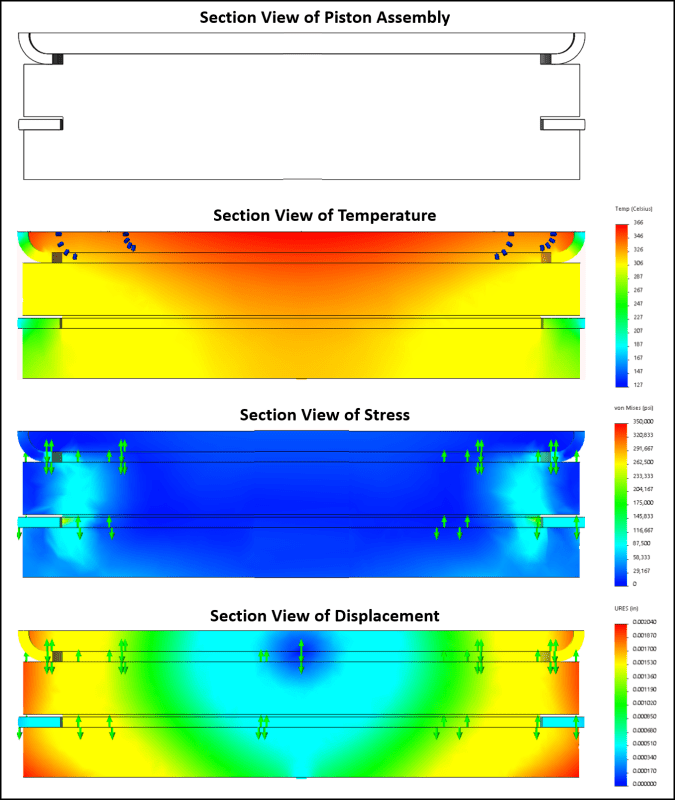BrianPeterson, I'll tackle your suggestions Monday (I have a family event tomorrow). In the meantime, I can give some quick answers.
My thermal analysis was steady state, so I didn't worry about initial internal temps of the parts. It wouldn't matter if I were only doing thermal, but I'm doing thermal induced stress, so the initial temperature of the components matters. According to
this article, since I didn't set the initial temperature on the parts, Solidworks likely defaulted them to 0 Kelvin (!). The stresses and displacements I plotted may thus have been those associated with a temperature rise from 0 Kelvin (-273C) to just under 400C ! I'll obviously need to check that Monday.
![[smile] [smile] [smile]](/data/assets/smilies/smile.gif)
The operating temperature of the engine should be limited on both the low and high end by the oil. The 127C wall temp I selected relates to max oil temp before it no longer lubricates the cylinder walls effectively. The minimum operating temp is determined by the point at which the oil and fuel gel (
this article suggests a block heater below 20F, so that's probably a number for min operating temperature). Process wise, I believe the piston and rings would be chilled then installed into a heated block to effect a moderate interference fit.
I get that folks are concerned about expansion. Let me see if I can explain why I think this is worth exploring. My ring is very small (1" diameter, 3.14" circumference) and will expand one fourth as much as a standard ring (nominally 4" diameter, 12.6" circumference). The rule of thumb for ring gaps is 0.003" per inch of bore, so the standard ring's circumference expands about .0120" while mine expands 0.003". Now imagine trying to press fit the 4" rod into a 3.988" hole (0.12" interference) and the 1" rod into a 0.997" hole (.003" interference). The attempt to press fit the 4" rod will fail unless you bore out its center and cut a notch in it that allows compression of its circumference. The 1" solid rod will, however, press fit readily, and the pressure required to do so can be reduced by boring out its center to make a thin walled pipe, no notch required. From this, it's clear my ring will certainly be unsuitable for a large engine. That's OK. All I'm trying to do is eliminate the risk of blow-by and ring flutter in my small prototype. My prototype already suffers from low volume/surface area (like any small engine), so I may as well exploit its small size to get some gains in the area of ring performance. I don't doubt it will "work," but I do think it may be a challenge to minimize wall pressure when unloaded with gas pressure while still holding up under 220 bar combustion pressure.
Thanks for your continued input! I'll get back to you when I resume the simulations.





![[smile] [smile] [smile]](/data/assets/smilies/smile.gif)